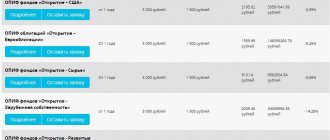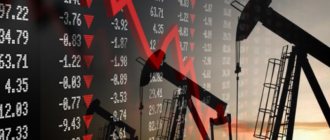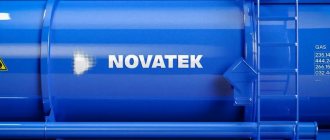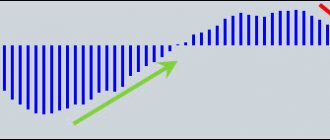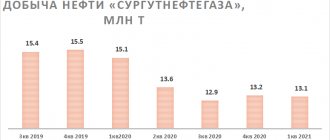How much is your gas?
When it comes to the cost of a barrel of oil, to assess the current dynamics of the energy market, just look at the quotes of the benchmark Brent or WTI. However, when we hear that world gas prices have risen or fallen, reasonable questions arise: prices for natural pipeline gas or liquefied gas, in which region of the world did the jump occur, and how will this affect the economy and shares of exporters?
The difference in gas prices at the moment can reach hundreds of percent, depending on the sales market and the remoteness of production, the method of delivery of raw materials, storage capabilities and weather conditions of the region of its use. At the peak of prices in early January, due to abnormally cold weather and a sharp depletion of raw material reserves, the gas rate varied from $340 per thousand cubic meters at Dutch hubs to $660 in Spain. Asian contracts exceeded the level of $700 per thousand cubic meters. m.
In addition, the gas market is characterized by explosive price volatility - annual contract volatility reaches 70%, average daily risk exceeds 4%. By comparison, the annual volatility of the S&P 500 stock index is 35%. We understand the peculiarities of gas market pricing in various regions of the world.
Gas flows
Based on the method of delivering fuel to the end consumer, the natural gas market is divided into pipeline gas (TPG) and liquefied gas (LNG), delivered by sea, river, road and rail tankers.
According to current statistics from BP Corporation, the share of LNG in total gas exports was 35% (431 billion cubic meters), TNG accounted for 65% of the market, or 805 billion cubic meters. m. Over the past 20 years, the growth rate of the LNG market is 2 times higher: the average annual growth is 9.4% for LNG versus 5% for trunk gas.
Market liberalization, infrastructure development and even geopolitics have an impact here. Competition among suppliers is increasing, but there is no “Gas OPEC” that could stabilize the industry in a situation of increased turbulence.
Leading players in the pipeline gas market:
Distribution of leading roles in the LNG market:
For Russia, as the main player in the pipeline gas market (28% of global export traffic and more than 33% of the European market) and an important player in the LNG segment (6th place in the world with a share of 6%), the 2021 crisis led to a drop in pipeline supplies by 10% and growth of 5.5% in the LNG sector. As the crisis passes, the picture “through the pipes” can seriously improve, and the opposition of exporters can increase.
The main consumers of pipeline gas are Europe (60%), North America (18%), Asia (9%), CIS (7%). The picture for LNG is radically different: the Asia-Pacific region takes almost 75% of LNG, and Europe - 17%. Thus, the struggle of producers is unfolding on the front of capturing the European sales market for TNG and retaining the share of Asian LNG traffic.
Taking into account Russia’s share in the mainline and liquefied gas markets, we can conclude that now for us gas exchange rate indicators are primarily the prices of raw materials in Europe (74% - the weight of the regional factor) versus 26% in the Asia-Pacific region.
And this is despite even the multiple discrepancy in prices on different continents, since the volatility of prices is caused by temporary weather conditions and the resulting speculation. When supply volumes change, the influence of the regional factor will also be adjusted.
Lost in translation
Gas pricing differs depending on the urgency of execution of transactions: trading takes place on spot contracts and futures markets. A special feature are long-term contracts between producers and consumers of gas (primarily TPG), the surplus of which historically forms the spot market.
Of particular interest is the exchange rate formation of American gas. Futures on the Henry Hub are popular. A benchmark exchange-traded futures instrument quoted on the NYMEX commodity exchange (ticker NG).
The rate differs several times from the average European, and even more so Asian prices, since it does not take into account the final cost for the consumer, including transportation, liquefaction (regasification) costs, insurance, and the profitability of the seller.
Therefore, mentioning the cheapness of American gas compared to European TPG seems incorrect. In reality, the difference can reach 20% or more - not in favor of the cost of American raw materials.
Another feature of the gas market is the different metric accounting system :
• in the USA, prices are indicated in British thermal units (Mmbtu) • in Europe - MW/hour (MWh) • in Russia, accounting is in thousands of cubic meters (Tcm)
To convert to a single denominator ($/cube), we use the following coefficients: 10.5 for the European standard in MWh, 36 for the Anglo-American Mmbtu. Conversion rates may differ depending on the physical and chemical characteristics of the energy carrier.
For example, the gas price at the Dutch TTF hub on January 27, 2021 - 19.52 euros/MWh in dollars per thousand cubic meters will be: 19.5*10.5*1.21 (EUR/USD rate) = $248 per thousand cubic meters natural gas.
Where to look
You can track natural gas market trends on the following sites:
NBP - UK National Balancing Point. Prices are shown in cubic feet.
TTF is the hub of Holland. Prices are shown in megawatt hours.
EEX - European Energy Exchange (service for the main European hubs).
Henry Hub (NYMEX, NG) - US hub. Prices are shown in British Thermal Units.
Platts JKM is a price marker for natural gas in the Asian region (Japan, South Korea). Prices are shown in British Thermal Units.
Total
The natural gas market has a fairly pronounced segmentation based on the method of delivering fuel to the end consumer. There is no single center for asset exchange rate formation. Competition for sales markets takes place in two main directions - Europe and Asia.
Gas pricing is subject to multiple influences of factors, sometimes leading to multiple discrepancies in prices in different regions of the planet, which producers themselves sometimes do not fail to take advantage of for speculative purposes.
There is no need to develop short-term correlation models, since the volatility of the commodity instrument is at a very high level. A separate study is devoted to the issue of medium-term dependencies between the prices of shares of gas companies and quotations of raw materials.
And of course, “nature has no bad weather” - lower temperatures lead to increased demand for energy. The winners are the budgets of export-oriented states, gas companies and their shareholders.
BCS World of Investments
The principle of parity in exchange sales did not work
In 2014, gas trading was launched on the exchange. This was supposed to serve the development of the Russian gas market and provide the basis for market pricing for this product. Over the course of 3 years, a technical and regulatory framework was created, equal conditions for access to trading were ensured, and exchange instruments were introduced with gas supply for the month, for the day, and for non-working days.
Discussions about the need to reform the Russian gas market have been going on for decades. At the same time, despite the unresolved nature of many key problems (state regulation of wholesale prices, transparency of tariffs for the use of gas transportation infrastructure or underground gas storage facilities), in a number of other areas progress is obvious in moving away from state regulation towards a market-oriented industry.
“At the initial stage, there was a rejection of exchange trading mechanisms on the part of various manufacturers. But now the attitude has seriously changed - in particular, they received great support from Gazprom. For the gas market, the exchange has become an important mechanism for competition for consumers, for entire regions, and has made it possible to launch real liberalization of pricing in this industry. A mechanism has been created that works, and factors of economics, efficiency, and competition play an increasingly important role in it,” said Alexey Rybnikov, president of the St. Petersburg International Commodity and Raw Materials Exchange, in an interview with Vedomosti.
Photo theco.ru
For the gas market, the exchange has become an important mechanism for competition for consumers, for entire regions, and has made it possible to launch real liberalization of pricing in this industry
At the stage of launching exchange trading, it was planned to maintain equality in gas supply volumes to the exchange market between PJSC Gazprom and independent suppliers (Novatek, Surgutneftegaz, Rosneft, Lukoil). However, the declared principle of parity in exchange sales did not work. If in 2015-2016 Gazprom’s share in auctions ranged from 50 to 65%, then in recent years it has increased to 90%. The current situation is significantly influenced by the lack of sufficient volumes of contract-free gas from independent producers. For example, Novatek directs additional volumes of gas to produce liquefied natural gas (LNG) at Yamal LNG for subsequent export; In 2018, Rosneft entered into an agreement to purchase 5 billion m³ from Gazprom to fulfill its contracts. As a result, the potential for further growth in indicators was exhausted.
Plans for further development of trading
The previous development strategy of SPIMEX was approved for a three-year period. During this period, a full-fledged holding company was built, including an exchange, a clearing organization and an electronic trading platform.
A new document has now been prepared - a long-term strategy, designed for 5 years. It is planned that the diversified digital platform will bring together all products for the spot, derivatives and over-the-counter markets. This should primarily help bidders find the best solutions for all issues related to the sale, purchase, relocation, insurance of goods and other related services.
Photo iz.ru
Gas is now traded in accordance with the current regulatory documents. To move forward, it is necessary to change a number of government decrees, adjust joint orders of the Ministry of Energy and the Federal Antimonopoly Service, and take strict administrative measures
As noted by the President of the St. Petersburg International Commodity and Raw Materials Exchange, Alexey Rybnikov:
“Gas is now traded in accordance with the realities of current regulatory documents. To move forward, it is necessary to change a number of government decrees, adjust joint orders of the Ministry of Energy and the Federal Antimonopoly Service, and take strict administrative measures. If at one time the state was not shy about doing this on the oil products market, then why should it be shy on the natural gas market? Specific actions regarding the development of exchange trading in gas are also spelled out in the national plan and in the road map for the development of competition in Russia; there is no need to invent anything. All we need is the political will to implement all this.”
How to trade natural gas in 3 quick steps:
Natural gas trading can be done through multiple trading platforms and any individual investor can access natural gas contracts. However, before you start trading, you want to find the cheapest and most reliable option that will allow you to execute a large number of orders with minimal risk. Follow the instructions below to get started.
Open a trading account.
Open a free trading account with our recommended broker. As part of the registration process, you will be required to provide your personal details for KYC.
Depositing funds
Once you have completed registration and your account has been approved, you can transfer funds to your account using one of the provided payment methods.
Demo and real trading
Start trading on a demo account. A demo account allows you to trade in real time and also learn about the mechanics of gas trading and understand the basic terms.
Open a gas trading account now
67% of retail investor accounts lose money when trading CFDs with this provider. You should consider whether you can afford to risk losing your money.
Self-contracting
The term “self-contracting” means that the seller assumes the risk of marketing the product and enters into a sales agreement with its marketing affiliate. Recent developments in the industry have seen the emergence of hubs with LNG terminals and pipeline access in the US, UK and Belgium. International oil companies managed to take advantage of the emerging opportunities and create a new market segment. They currently market gas produced from LNG by supplying it via pipelines to wholesalers, distributors or end users. The self-contracting mechanism is believed to have been used for the first time in the Atlantic LNG project in Trinidad and Tobago. The Atlantic LNG project sells LNG FOB at Point Fortin to subsidiaries of liquefaction partners BP, BG, Repsol and GDF Suez. A significant portion of Atlantic LNG's production is destined for the United States, and subsidiaries of project participants sell regasified products to customers in the U.S. market. While early projects in Qatar and Nigeria were based on traditional sales contracts with electricity/gas companies, subsequent pipelines are increasingly operating on a self-contracting basis. Self-contracting is now a standard feature for a number of projects planning to supply LNG to the Atlantic market. These include the Australian Gorgon, the Norwegian Snohvit and the Nigerian Brass LNG.
The exchange market still lacks sales volumes
For clarity, you can compare the indicators of previous years. Thus, the trading volume of the “Natural Gas” section in 2021 amounted to only about 15.1 billion m3, which is 25.6% less than the previous year (of which 12.5 billion m3 were contracts for “next month” delivery, and for contracts with “per day” supply - 2.6 billion m³). At the same time, since 2021, volumes of exchange gas from independent suppliers have been steadily decreasing, and the number of buyers has been increasing.
In 2021, demand for exchange gas significantly exceeded supply. This was primarily due to a decrease in gas volumes sold by Gazprom itself, as well as a reduction in supply volumes and the withdrawal of independent producers from trading.
To solve this problem, the FAS sent draft resolutions on the parameters of the liquid market and on exchange balancing for consideration to the ministries. It is expected that the documents will be met with objections, since the issues of balancing and changes to the rules of gas supply will affect the entire population, all consumers. The new resolutions also describe approaches to ensuring market liquidity: instead of the condition that Gazprom and independent suppliers equally sell 17.5 billion m³ of gas per year on the stock exchange, a condition is introduced for Gazprom to sell at organized auctions at least 6% of the produced commercial gas , and to other suppliers - at least 10%. Thus, Gazprom’s share of permitted volumes will be increased from 17.5 billion m³ to no less than 35 billion m³.
In 2021, demand for exchange gas significantly exceeded supply. This was primarily due to a decrease in gas volumes sold by Gazprom itself, as well as a reduction in supply volumes and the withdrawal of independent producers from trading. Photo dp.ru
According to market experts, such a step can only lead to a weakening of competition: in fact, Gazprom’s dominance will increase, and independent producers will completely lose incentive. Gazprom, being also the sole owner of the gas transportation system, can use the stock exchange as an instrument of anti-competition.
One can, for example, recall the relatively recent demarche, when at the end of September - beginning of October last year, Gazprom unjustifiably stopped supplying gas volumes to the daily exchange. Considering that Gazprom accounts for about 90% of sales, the company’s withdrawal from trading actually meant their cessation. Then Gazprom justified this by the need to fill underground gas storage facilities before the start of the heating season and by the fact that all planned volumes had already been sold at auction a month in advance. However, experts assumed that in this way Gazprom was reminding the government of its importance, which was making attempts to support independent producers.
The exchange market still lacks sales volumes, both in “monthly” and “daily” trading. The main sales of exchange volumes are currently taking place on the basis of the Nadym compressor station, and on the basis of the Lokosovo supply, the market price has practically not decreased for several months.
Experts have an assumption that Gazprom enters the stock exchange both as a buyer and as a seller, and enters into deals with itself in concert, trying to avoid lowering the price for everyone. In fact, the exchange becomes a tool for “pumping” gas by Gazprom from the regulated sector to the unregulated sector.
Tatarstan energy specialists tracked the sometimes not entirely logical flow of exchange trading sessions. Photo courtesy of the press service of OJSC "TGC-16"
Tatarstan energy specialists tracked the sometimes not entirely logical flow of exchange trading sessions. At daily auctions with a half-hour time limit for the trading session, the main volume of transactions was sometimes completed in the first 10-20 seconds, and in the remaining time the offered price practically did not change and, accordingly, did not satisfy the requests of buyers. On the monthly exchange, the price offered by suppliers at organized auctions has not changed over the past few months, and together with the transport component it turns out to be even higher than the price offered by the FAS, which does not allow TGK-16 to purchase exchange volumes, company specialists note .
FAQ
When is the best time to trade natural gas?
Natural gas futures are traded on two major futures exchanges. CME natural gas trading hours are Sunday through Friday from 6:00 a.m. to 5:15 a.m. ET. On ICE, trading is available from Sunday to Friday from 23:00 to 10:00 GMT. On the Etoro platform, natural gas trading is available from Monday to Friday from 01:00 to 23:30.
What is the market symbol for natural gas?
The natural gas spot contract code is NG. The same ticker symbol is used for the CME and NYMEX futures contracts.
What are the main factors influencing natural gas prices?
Factors affecting natural gas prices include seasonality, weather, geopolitical tensions, storage and transportation disruptions, production and renewable energy development.
How much money do I need to trade natural gas?
Because natural gas is a commodity, futures exchanges require high margins. Therefore, the best solution is to trade natural gas through a CFD broker such as eToro.

